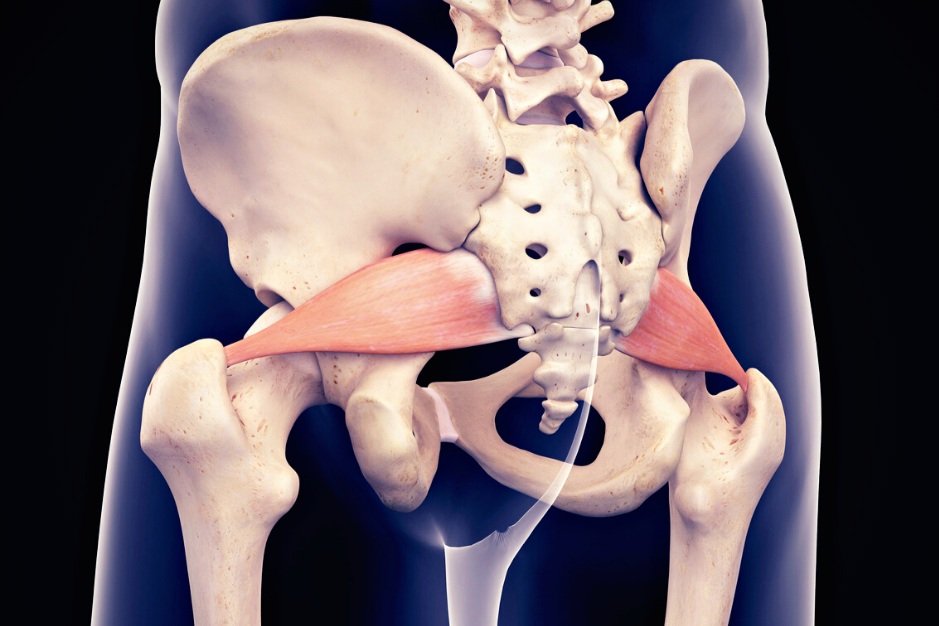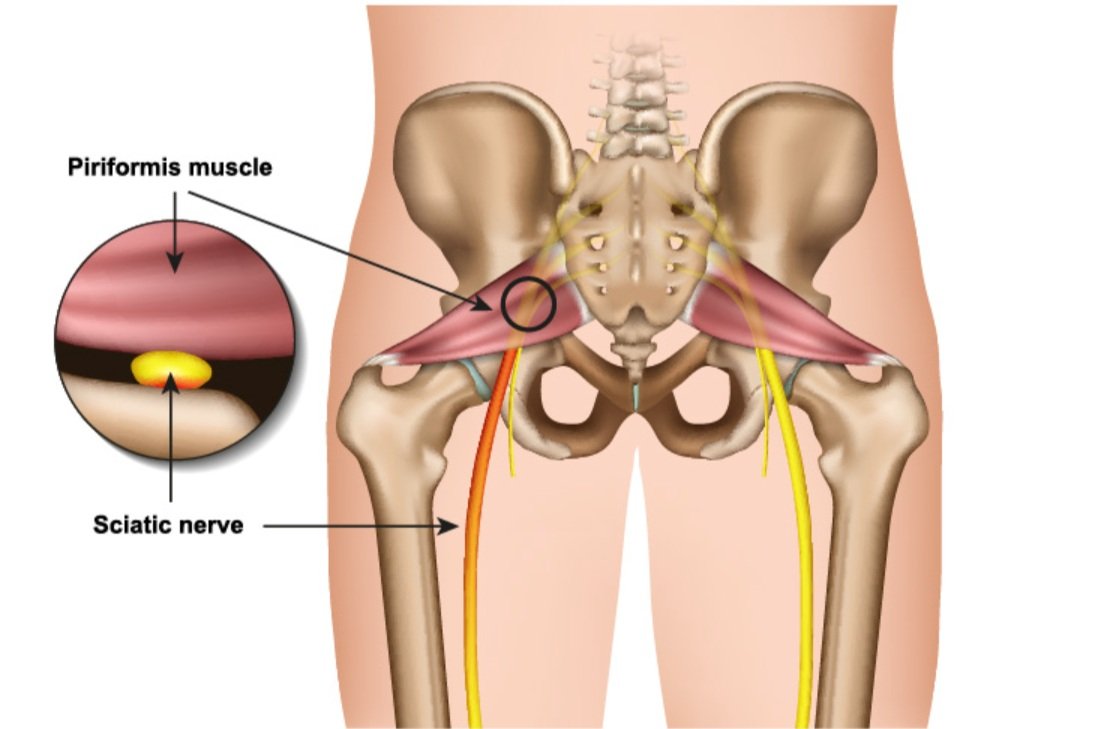Physical Therapy for Piriformis Syndrome
Piriformis pain syndrome can develop due to tightening of the piriformis muscle, which can irritate or compress your sciatic nerve causing significant pain in the buttocks, hip, lower back, and back of the leg. The piriformis muscle is a flat, band-like muscle located in the buttocks directly above the sciatic nerve that stabilizes the hip joint and enables lower extremity movement. Physical therapists can relieve piriformis syndrome pain and restore normal movement and range of motion in the affected area through targeted strengthening exercises, manual therapy, and movement reeducation.
What is Piriformis Syndrome?
The piriformis muscle is a flat, band-like muscle located in the buttocks near the top of the hip joint. It connects the lowermost vertebrae of the spine with the upper part of the leg after traveling the “sciatic notch,” which is the opening in the pelvic bone that allows the sciatic nerve to travel into the leg. The piriformis muscle runs directly above the sciatic nerve.
The piriformis muscle plays an important role in lower body movement because it stabilizes the hip joint and lifts and rotates the thigh away from the body, enabling you to walk, shift weight from one leg to another, and maintain balance.
Piriformis syndrome develops due to tightening of the piriformis muscle, which can irritate or compress your sciatic nerve near the piriformis muscle, causing significant pain in the buttocks, hip, lower back, and back of the leg. Anyone can develop the syndrome, but females appear to be more likely to be affected than men by a ratio of 6:1. Between 5-10% of sciatica cases are thought to be due to piriformis syndrome.
Athletes, especially those who repeat the same motions over and over (lunging or running), are at higher risk of compression of the sciatic nerve as are those who lead a sedentary lifestyle or have occupations that involve sitting for long periods of time.
Common causes of piriformis syndrome can involve:
injury such as a fall
low back issues that cause the piriformis muscle to tighten up as a protective mechanism, causing the piriformis to spasm which can affect the sciatic nerve due to its proximity and cause radiating pain
tight abductor muscles or malfunctioning gluteal muscles that transfer stress to the piriformis muscles
repetitive strain due to sitting position or repetitive motions
changes in gait
prior hip surgery
unusually vigorous exercise
foot issues
abnormal development or location of the piriformis muscle or sciatic nerve
leg-length discrepancy
scoliosis
Symptoms of piriformis syndrome can include:
Pain, tingling, or numbness in the lower back or buttock that radiate down the leg
Sharp, severe, radiating pain
Difficulty sitting or putting weight on buttock on one side
Muscle spasms of the piriformis muscles
Sciatic-type pain when the hip is moved and rotated outward
Reduced range of motion of the hip and affected leg
Pain felt in both sides of the body and legs (sciatica generally affects one side more than the other)
Pain can be triggered by climbing stairs, running, sitting for a long time, or applying pressure directly over the muscle
Physical Therapy for Piriformis Syndrome
Physical therapy can isolate the true origin of the piriformis syndrome pain, help to relieve pain and restore normal movement and range of motion in the affected area. The physical therapist first performs a thorough evaluation, assessing pain and functional status, hip joint examination, and muscle strength and biomechanical assessment. Based on the evaluation, the therapist designs a customized treatment program tailored to the patient’s specific condition. Most patients regain full function following 4-6 weeks of physical therapy.
Physical therapy treatment for piriformis syndrome can include:
Pain management using heat, ice, and ultrasound
Targeted stretching, particularly of the hamstrings
Manual therapy soft tissue and joint mobilizations to increase blood flow to the area, reduce muscle spasms in the piriformis, and improve mobility and range of motion
Myofascial release to relieve tightness in the piriformis and surrounding soft tissues
Targeted hip-strengthening exercises, particularly the hip abductors, extensors, and external rotators
Movement reeducation to minimize stress on the piriformis muscle and the sub gluteal area and restore stability to the lower extremity.
If you’re experiencing piriformis syndrome pain and sciatica, give your physical therapist a call to relieve your pain and help you regain function and ease of movement!

